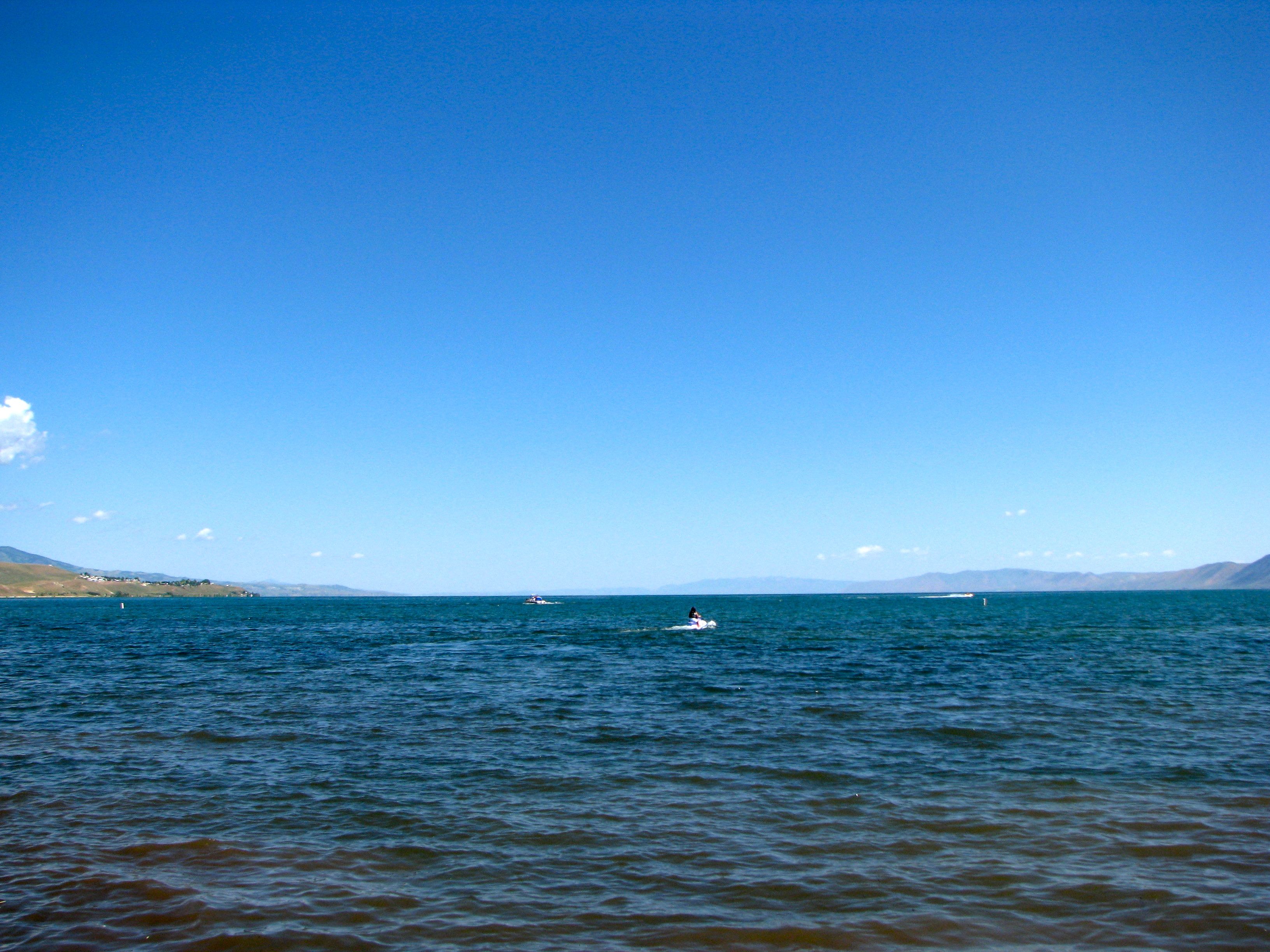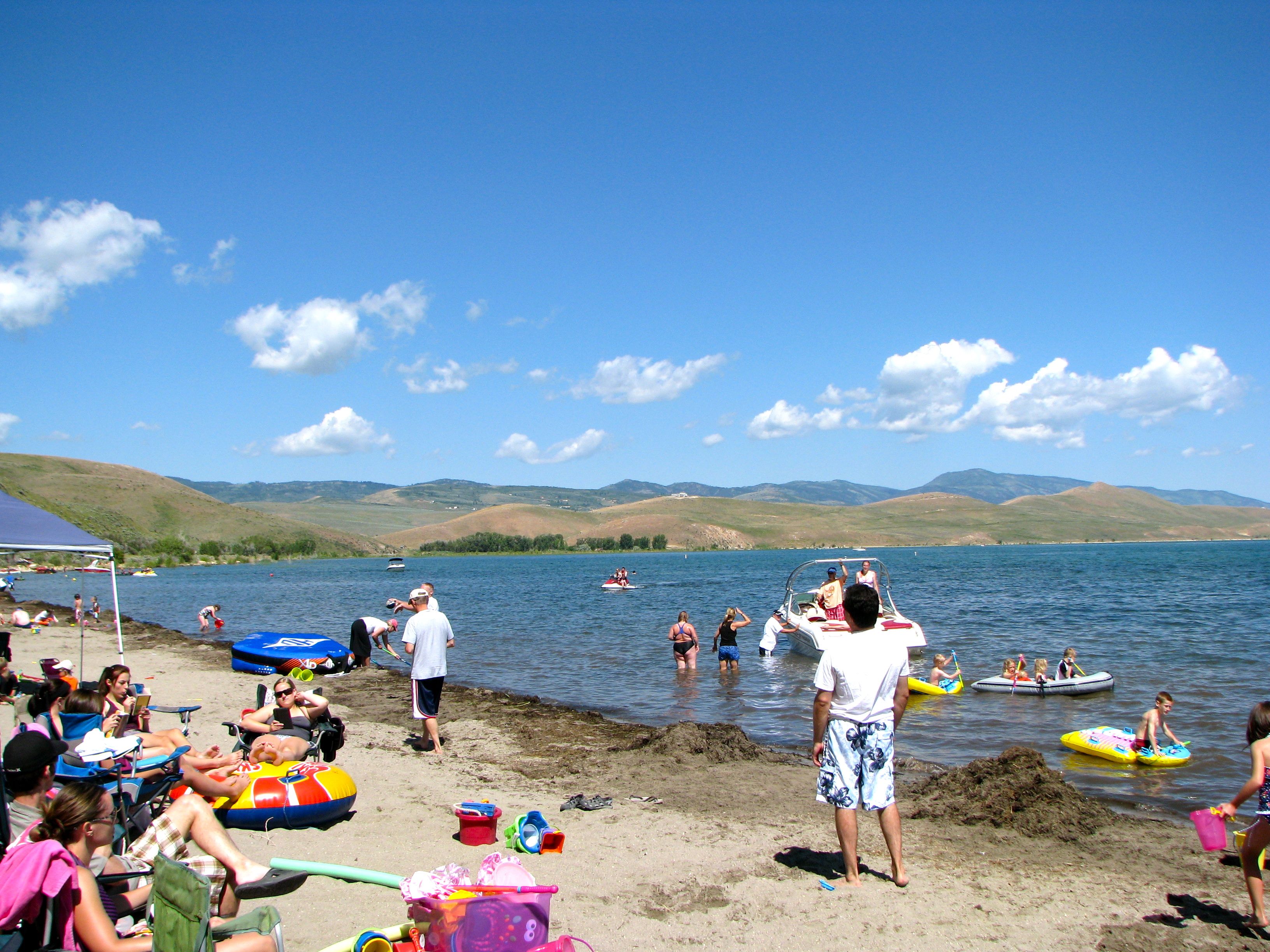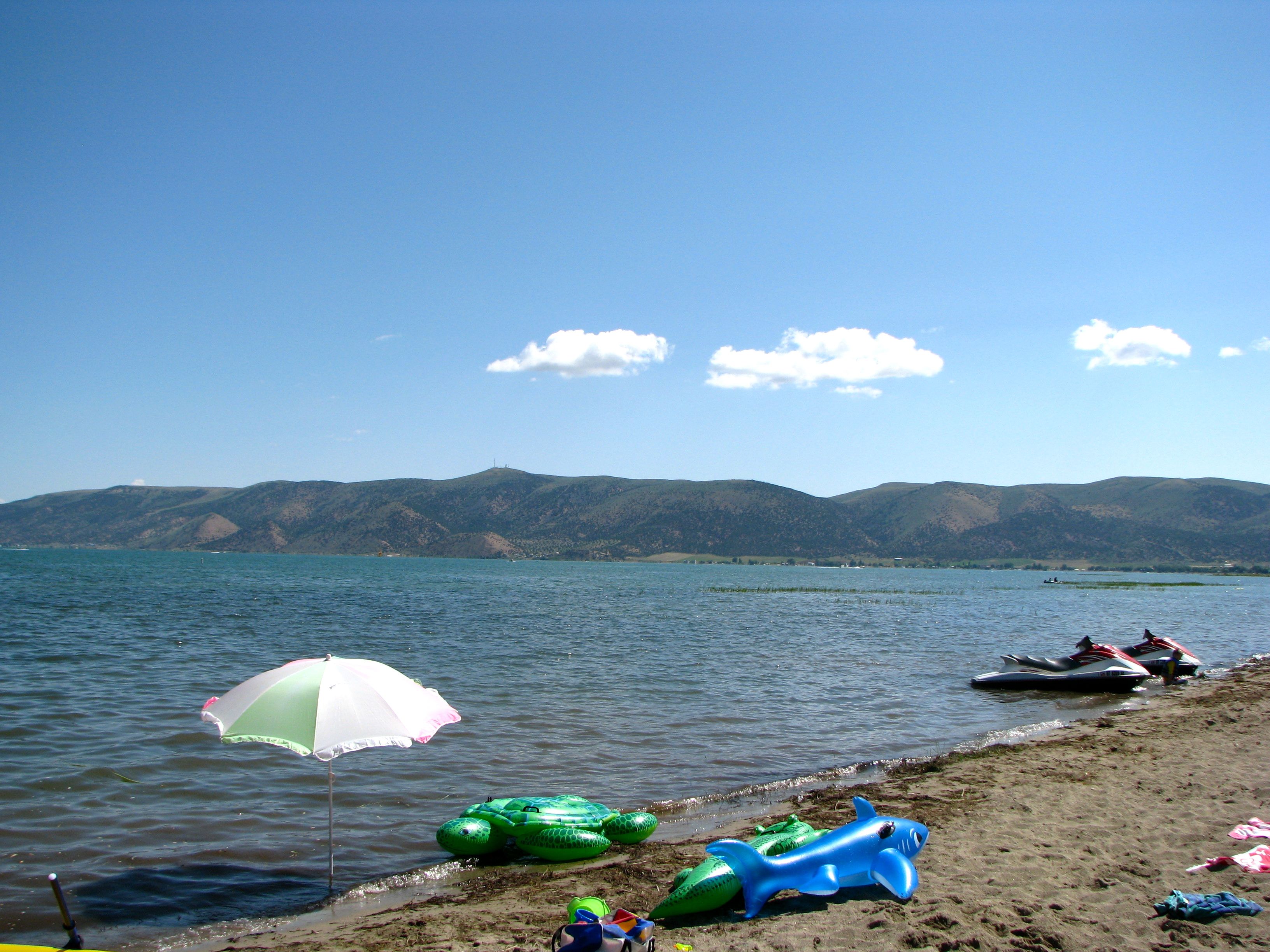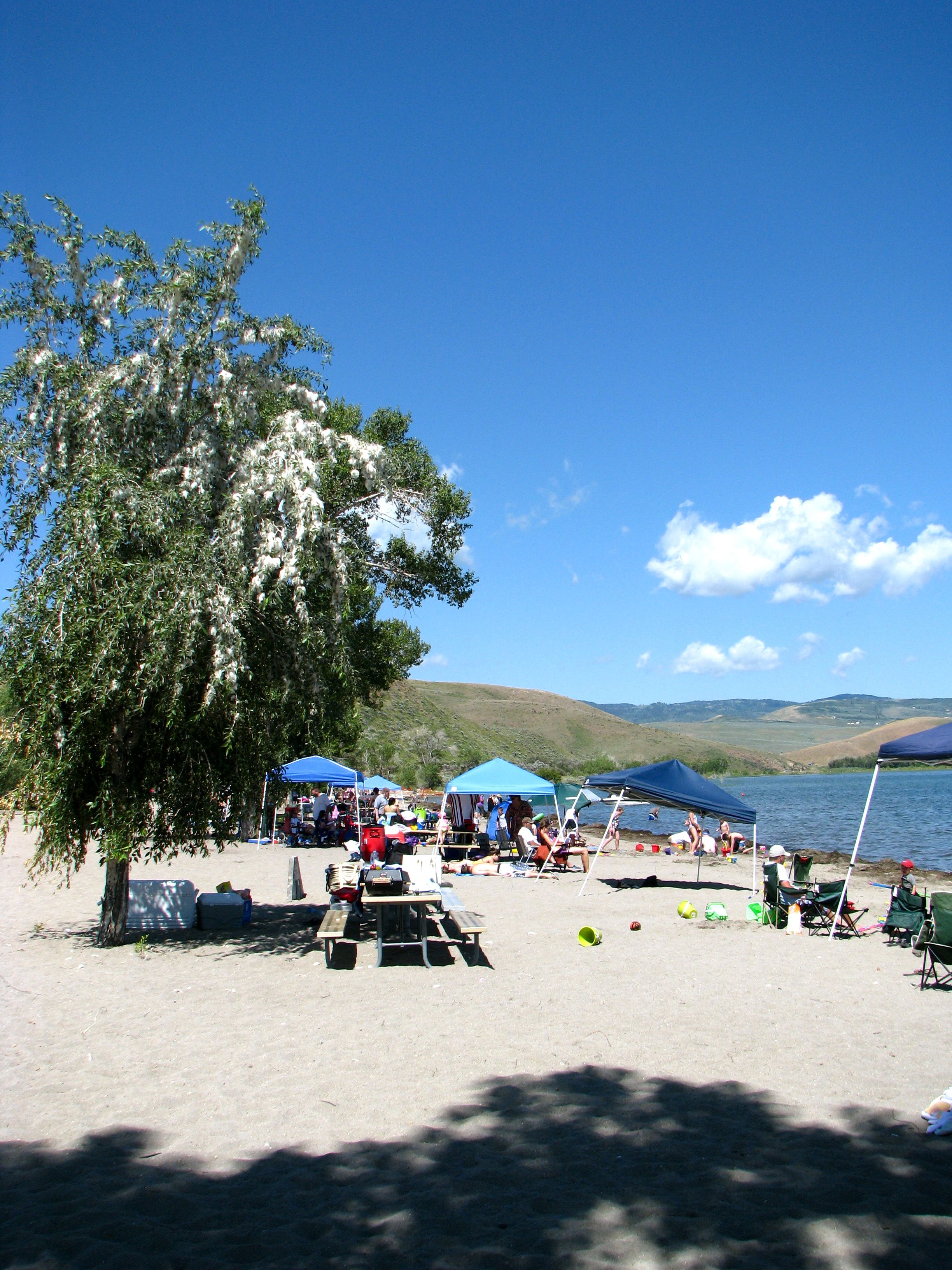Bear Lake State Park; Garden City, Utah, USA (July 2011)

We drove east out of Logan, Utah on Highway 89, the Logan Canyon Scenic Byway through the Bear River Mountains, a branch of the Wasatch Range. We meandered for nearly forty miles along the winding road until we crested the summit and stopped at a scenic overlook, with the dark blue waters of Bear Lake spread out far below us.
The lake is quite impressive, some twenty miles long and eight miles wide, and as deep as 200 feet in locations. It’s also too large for any one state I suppose. The border between Utah and Idaho splits it practically in half. We drove down the steep grade into Garden City, Utah, turned right, and followed the lakeshore until its reached its southern terminus at Rendezvous Beach (map) in Bear Lake State Park.
To the Beach

This wonderful, natural freshwater lake offers all types of summertime activities. Boats and jet skis zipped across the waters. Fishermen tried their hand at catching cutthroat trout or some of the more unusual fishes that call the area home. Others relaxed and lounged on the beach in the sand. Bear Lake is sometimes called the “Caribbean of the Rockies” for its intensely blue waters. I’m not sure I’d go quite that far in drawing a comparison. On the other hand, Bear Lake doesn’t really need to be compared to anything else. It stands on its own merits just fine.
Climatically, Bear Lake was considerably cooler than the Salt Lake Valley we’d left earlier in the day. That may be due to its elevation considerably above a mile high, at nearly 6,000 feet at the lake surface, or perhaps because of the ring of mountains around it acting as a deflection. I don’t know the answer, but I do know that on a bright July day I would shiver whenever a breeze came across me while I sat in the shade. That was remedied easily enough by moving the lounge chair back into the sun.
We were advised to arrive early since the park can fill-up quickly on a nice day during the summertime. Thus we got there before noon and had no problem making it in, finding parking, and staking-out a prime spot on the beach. We even packed a lunch and enjoyed it at one of the many picnic tables available along the shoreline. However, when we left later that afternoon we saw a considerable line of traffic waiting to get into the park. The advice was correct.
Geology

Bear Lake does not drain into the sea. It flows into the Bear River and eventually into the Great Salt Lake. The Bear River is the Great Salt Lake’s largest tributary, and in fact it is the largest river in the United States that doesn’t have an outlet. It’s rather isolated from the larger watershed in general and that’s allowed several species of fish found nowhere else to evolve here. These include varieties of cisco, whitefish and sculpin.
Its isolation also means that water finding its way into the lake tends to stay there for awhile. The incredible snowfalls of the 2010-2011 winter meant that Bear Lake was up to record levels when we visited in the summer of 2011. Only two beaches were open, one on the Idaho end and Rendezvous Beach on the Utah end. All of the others were below water!
The lake has its roots in an ancient earthquake in a configuration known as a half-graben valley. A graben happens when a section of land drops down in such a way that it produces a valley between steep sides; half-graben means that only one of the sides is steep, where an earthquake fault can be found only along that one side.
History

Bear Lake has a long an interesting history. The Shoshone Indians lived here before people of European descent arrived. That didn’t happen until about 1818 when French-Canadian trappers wandered up to it from the Bear River. It gained its name a year later when another trapper, Donald Mackenzie came through the area.
Bear Lake also played a role during the brief era of the mountain men. They met annually in a large gathering each year between 1825-1840, selling their furs and replenishing their supplies. The event also served as an occasion for a huge party where the mountain men caught-up with their friends, swapped stories, and spent a lot of the money they’d just earned on booze or other indulgences not generally found in the wilderness throughout the remainder of the year.
This annual celebration, marketplace, social occasion, or whatever, was called the Rendezvous. At least two of these Rendezvous meetings took place on the southern end of Bear Lake, 1827 and 1828. Today, that is where Rendezvous Beach is located. One sits by the lake in the same spot where the mountain men gathered a thousand strong nearly two centuries ago.
The major trails bypassed Bear Lake. The Oregon Trail ran to the east and the north but not to the lake itself. Thus, Bear Lake was relatively undisturbed for a period of time during the mid Nineteenth Century. It wasn’t until 1863 that Mormon settlers moved into the valley permanently under the leadership of Charles Rich (the Utah portion of Bear Lake is located in Rich County, named in his honor). This began its modern history.

Leave a Reply